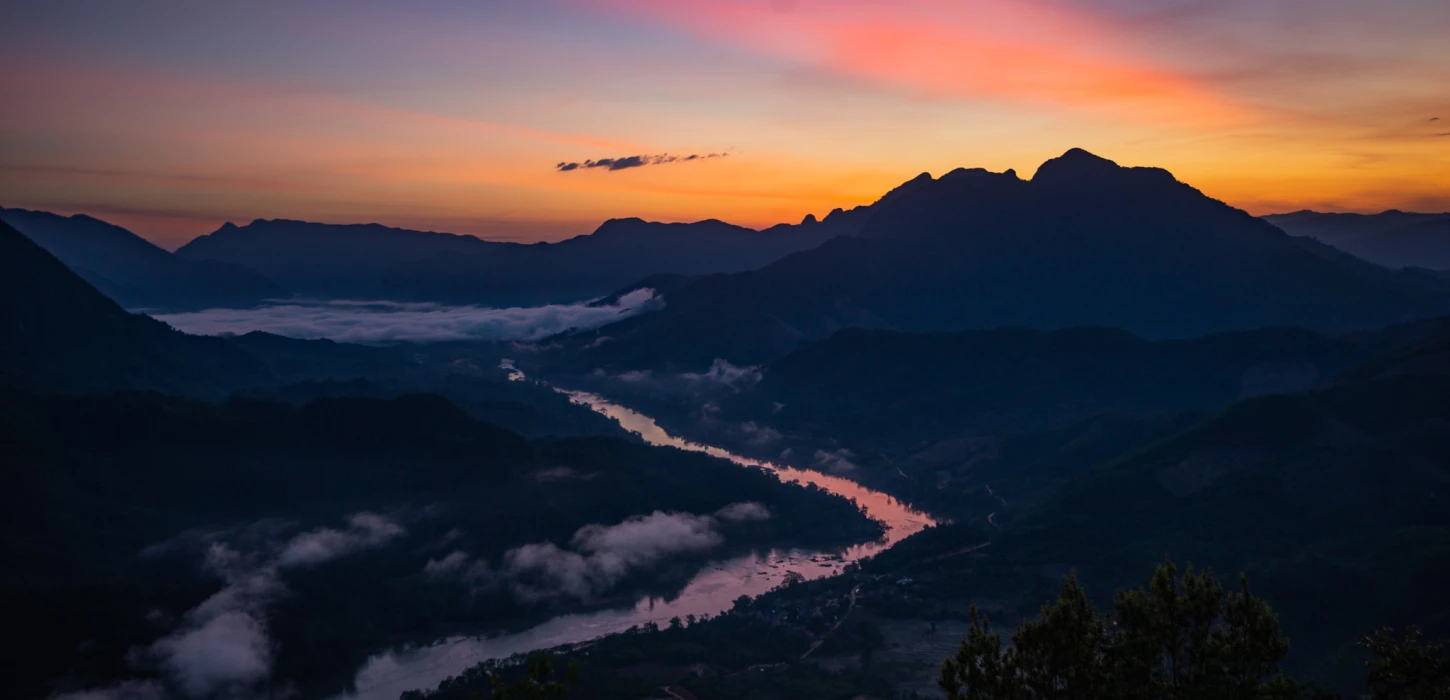Laos is a small country of only seven million people, nestled away in the heart of South East Asia. It is gaining popularity with western tourists and is well known for its hospitality, incredible scenery, fantastic attractions, and its eponymous beer.
But there is so much more to Laos! Below we’ve collected ten incredible facts about Laos for you to discover a bit more about this mysterious country.
Most Bombed Country in the World
Laos holds the unenviable position as the most bombed country (per capita) in the world. During the Vietnam War the USA also waged an illegal ‘Secret War’ against the communist forces of the Pathet Lao and Viet Cong by dropping more bombs on Laos than all the ordinance used during the Second World War. Many of these were cluster bombs, of which approximately 30% did not explode and riddle the country side to this day. Evidence of this dark chapter in Lao’s history can be seen all over Laos, especially on the eastern side.
Lao people are generally an easy going people, and have turned this grim past to their benefit with bomb casing be used for all sorts of things, from barbeques to boats, even integrating them into some of their housing designs.
Busiest Airport in the World
The town of Long Cheng (also spelled Long Tieng or Long Chieng) was the site of a CIA airbase of the same name. During the Secret War it was used as a base for CIA backed Hmong Fighters and US pilots. At its height it was the busiest single strip airport in the world, and the second largest city in Laos, but did not appear on any official maps.
The town was captured by communist forces at the end of the war and became a base for the Lao Army. It was off limits for visitors for many years but has opened up for tourism in the last few years. It is popular with bikers and history buffs, and an excellent place to see a unique part of history.
Land Locked or Land Linked?
Laos is the only land locked country in South East Asia, bordering China, Vietnam, Cambodia, Thailand, and Myanmar. This once served as a great benefit to Laos as its central position made it an important overland trading hub during the Lan Xang era, which was one of the largest empires in South East Asia during the 14th to 18th centuries. In more recent history this has been detrimental to Lao’s economic prospects as global economies began favouring sea trade. However it’s central position within South East Asia may soon offer Laos a chance to regain some its former glory as it strives to become a ‘land linked’ country and once again become an important trading hub. It is planning a number of international railways and highways that will connect Lao’s neighbours, providing once again a vital overland trading route. So while Laos might be land locked, it would prefer you refer to it as ‘land linked’
Not all Lao people are Lao
While the people of Laos are generally called ‘Laotian’ this is not strictly true. Lao is an ethnic group that migrated south from China during the first millennium CE, however only 50% of the population are ethnic Lao. The other 50% of the population are made up of 49 different ethnic groups, many of which have smaller sub groups and clan affiliations. The term Laotian refers to people who hold Lao citizenship, but may not actually be Lao.
Lao is one of the most culturally and ethnically diverse countries in the world is proud of these rich traditions. Traditional clothing and handicrafts are popular across Laos, often showcasing a design or motif unique to a group, region, or even village. It is also one of the most linguistically diverse countries in the world with a vast array of traditional languages being spoken, especially in rural areas. Indeed it is not uncommon for neighbouring villages to speak completely different languages.
Laos is the land of a million elephants
Modern day Laos is built on the foundations of the Lan Xang Empire, which literally translates to million elephants. It was given this name due to its large abundance of Asian elephants. Today there are only approximately 800 elephants left in Laos, with around half of these living in the wild. Numbers have declined due to poaching and habitat loss and it is a far cry from the abundance of elephants that gave the Lan Xang Kingdom its name. However there are numerous sanctuaries and conservation centres you can visit and support the conservation of these gentle giants. With the support of travellers and conservation groups, Laos can reclaim it’s title as the land of a million elephants.
Not all noodle soups are created equal
No matter where you are in Laos, you’ll be able to find a bowl of noodle soup. But for such a simple and staple dish, Laos has a huge variety of noodle soups. From Vietnamese style Pho to the thick noodles of Khao Piak and everything in between, almost every province has its own version of this classic dish. Some differences are as simple as the width of the noodles, while some varieties offer completely different stocks and base ingredients. Noodle soup is one of the most popular dishes in Laos so be sure to try it when you’re here. Don’t forget to the local varieties!
Laotian discoveries have rewritten history
From the oldest human skull discovered in South East Asia, to an entirely new species of dinosaur, as well as numerous ancient ruins and artefacts, discoveries in Lao have changed our understanding of the course of history. Often perceived as a sleepy little country with not much happening, its contributions to our understanding of the world have had huge impacts on how historians view the past. Even today there are new species being discovered in Laos, from microscopic bacteria to vertebrates. For such a small country it’s pretty impressive to see how it continues to shape how we view the world.
Fastest growing economy in South East Asia
Laos is one of the poorest countries in South East Asia, ranked 137th on the Human Development Index. However it is has one of the fastest growing economies in South East Asia, averaging around 7% growth per year over the last five years. This has far exceeded the growth seen in neighbouring countries and promises a bright future for the people of Laos. Much of this growth is due to large scale projects in the mining and hydro power projects, which generate significant income for the small country. Tourism is also a significant part of the Lao’s economic growth and by visiting Laos and supporting local businesses you play an important role in alleviating poverty!
More to rice than meets the eye
Rice is central in Laos culture, not just as a food source but also plays a significant role in many religious traditions as well. Some Khamu people plant special ‘mother’ and ‘father’ varieties of rice on the edge of their rice fields to indicate that their parents are still alive, while rice is frequently offered to both spirits and monks. Rice is hugely significant to the diet of Laotian people, making up as much as 70% of their caloric intake.
But not all rice is created equal. Laos is home to one of the highest degrees of biodiversity of all rice, and holds the largest varieties of glutinous (sticky) rice. There are over 3000 different varieties of rice grown in Laos. Some are more obvious in their differences, such as black sticky rice, while others are more subtle. No matter which variety you prefer, all Lao people will agree that it’s not a proper meal unless there is rice.
Unique Animals
A list of what makes Laos special wouldn’t be complete without noting some of Lao’s unique animals. Laos is home to the world’s largest spider, with a leg span of 27cm, the Laotian Giant Flying Squirrel, the Laotian Langur, and the Saola, sometimes called the Asian unicorn. Laos is also home to a number of unique species of snakes, and a huge number of geckos unique to Laos. Being a country of rivers, it is also home to a number of fish species that are endemic to Laos including the ‘fish with feet’ as it is called in Lao, a species of salamander found in some northern provinces. Many of these unique species have only recently been discovered and these discoveries continue to this day. If you are lucky you might even discover one yourself!
For such a small country Laos is packed full of wonder and mysteries, waiting to be explored. Rich in history and culture, unique wildlife, and unexplored wilderness, there is so much more to Laos than you might realise. If you’ve been to Laos before or you’re planning a trip soon, we hope these nuggets of trivia inspire you to get out there and Discover Laos Today!


